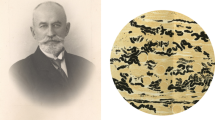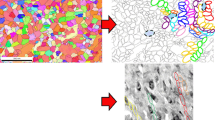Abstract
Immunofluorescence (IF) labeling is a powerful technique that can provide a wealth of information on structural organization, supramolecular composition, and functional properties of cells and tissues. At the same time, nonspecific staining and false positives can seriously compromise IF studies and lead to confusing or even misleading results. It is particularly true for the extracellular matrix component of forming enamel. Here, we present an optimized IF protocol for developing enamel. Autofluorescence blocking by Sudan Black B (SBB) and establishing of proper isotype controls lead to a significant artifact reduction and improve reliability of the IF data.
Access this chapter
Tax calculation will be finalised at checkout
Purchases are for personal use only
Similar content being viewed by others
References
True LD (2008) Quality control in molecular immunohistochemistry. Histochem Cell Biol 130:473–480. https://doi.org/10.1007/s00418-008-0481-0
Burry RW (2011) Controls for immunocytochemistry. Journal of Histochemistry & Cytochemistry 59:6–12. https://doi.org/10.1369/jhc.2010.956920
Erben T, Ossig R, Naim HY, Schnekenburger J (2016) What to do with high autofluorescence background in pancreatic tissues - an efficient Sudan black B quenching method for specific immunofluorescence labelling. Histopathology 69:406–422. https://doi.org/10.1111/his.12935
Kajimura J, Ito R, Manley NR, Hale LP (2016) Optimization of single- and dual-color immunofluorescence protocols for formalin-fixed, paraffin-embedded archival tissues. J Histochem Cytochem 64:112–124. https://doi.org/10.1369/0022155415610792
Nakata T et al (2011) Simultaneous detection of T lymphocyte-related antigens (CD4/CD8, CD57, TCRbeta) with nuclei by fluorescence-based immunohistochemistry in paraffin-embedded human lymph node, liver cancer and stomach cancer. Acta Cytol 55:357–363. https://doi.org/10.1159/000329487
Neo PY, Tan DJ, Shi P, Toh SL, Goh JC (2015) Enhancing analysis of cells and proteins by fluorescence imaging on silk-based biomaterials: modulating the autofluorescence of silk. Tissue Eng Part C Methods 21:218–228. https://doi.org/10.1089/ten.TEC.2014.0209
Oliveira VC et al (2010) Sudan Black B treatment reduces autofluorescence and improves resolution of in situ hybridization specific fluorescent signals of brain sections. Histol Histopathol 25:1017–1024
Romijn HJ et al (1999) Double immunolabeling of neuropeptides in the human hypothalamus as analyzed by confocal laser scanning fluorescence microscopy. J Histochem Cytochem 47:229–236
Sun Y et al (2011) Sudan black B reduces autofluorescence in murine renal tissue. Arch Pathol Lab Med 135:1335–1342. https://doi.org/10.5858/arpa.2010-0549-OA
Viegas MS, Martins TC, Seco F, do Carmo A (2007) An improved and cost-effective methodology for the reduction of autofluorescence in direct immunofluorescence studies on formalin-fixed paraffin-embedded tissues. Eur J Histochem 51:59–66
Yang Y, Honaramooz A (2012) Characterization and quenching of autofluorescence in piglet testis tissue and cells. Anatomy research international 2012:820120. https://doi.org/10.1155/2012/820120
Tan NCW, Tran H, Roscioli E, Wormald PJ, Vreugde S (2012) Prevention of false positive binding during immunofluorescence of Staphylococcus aureus infected tissue biopsies. J Immunol Methods 384:111–117. https://doi.org/10.1016/j.jim.2012.07.015
Yang X, Vidunas AJ, Beniash E (2017) Optimizing immunostaining of enamel matrix: application of sudan black b and minimization of false positives from normal sera and IgGs. Front Physiol 8:239. https://doi.org/10.3389/fphys.2017.00239
Author information
Authors and Affiliations
Corresponding author
Editor information
Editors and Affiliations
Rights and permissions
Copyright information
© 2019 Springer Science+Business Media, LLC, part of Springer Nature
About this protocol
Cite this protocol
Yang, X., Beniash, E. (2019). Immunofluorescence Procedure for Developing Enamel Tissues. In: Papagerakis, P. (eds) Odontogenesis. Methods in Molecular Biology, vol 1922. Humana Press, New York, NY. https://doi.org/10.1007/978-1-4939-9012-2_19
Download citation
DOI: https://doi.org/10.1007/978-1-4939-9012-2_19
Published:
Publisher Name: Humana Press, New York, NY
Print ISBN: 978-1-4939-9011-5
Online ISBN: 978-1-4939-9012-2
eBook Packages: Springer Protocols




